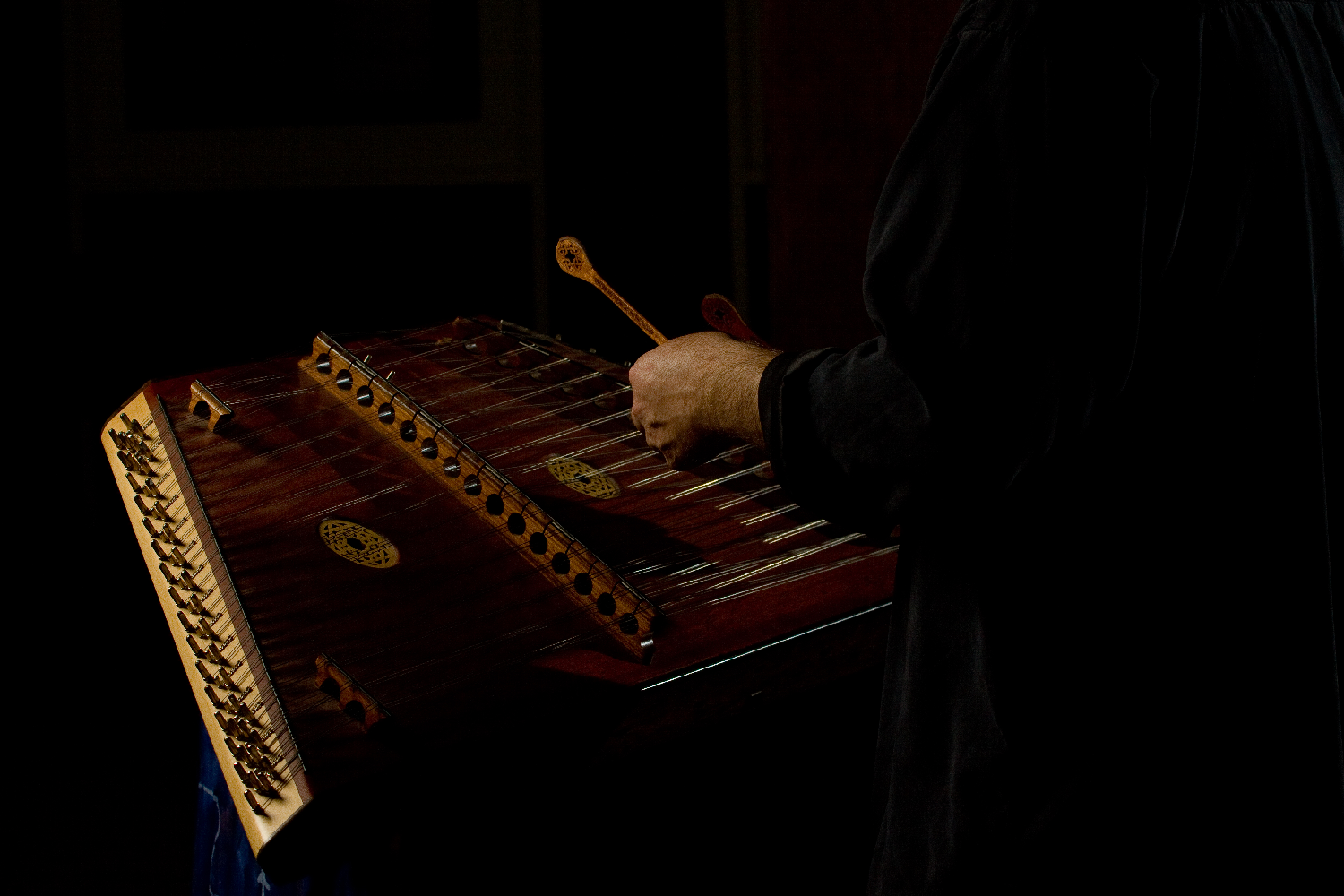
A hammered dulcimer is a trapezoidal-shaped instrument with a whole bunch of steel strings that are struck with wooden “hammers” that you hold loosely between your thumb and index finger. If you’ve ever looked inside a piano while it is being played, you would see that when a key is pressed, a lever mechanism results in a hammer or mallet striking a string. You make a sound on the hammered dulcimer exactly the same way, except that you are holding the hammers and striking the strings directly. I like to think of the hammered dulcimer as the precursor to the piano, although I don’t know if that is strictly true. You can read a bit more about the instrument and its history here.
Let’s take a look at a picture of a Master Works 16/15c. This picture is from the Master Works website (used with permission):

Notice that there are two main bridges: a bass bridge (on the right) and a treble bridge (on the left). The bass strings are struck just to the left of the bass bridge, while the treble strings can be struck either to the right or the left of the treble bridge. There are 16 pairs of treble strings and 15 pairs of bass strings (hence it is known as a 16/15 instrument — hammered dulcimers come in different sizes such as 12/11, 15/14, 16/15 or even higher). Most hammered dulcimers have a “stacked diatonic” tuning arrangement, which means that you’ll have the notes from the major scale (do, re, mi, fa, so, la, ti, do) from each of several keys, depending on the size of the instrument. This tuning arrangement is what makes the hammered dulcimer so deceptively easy to learn and fun to play. Because of the ingenious tuning arrangement, you will also be able to play in minor keys. Some hammered dulcimers, including the one shown above, are known as “chromatic,” which means that small satellite bridges have been added here and there to provide extra notes that would otherwise be missing — these are notes that are not typically needed for most folk or celtic music but would come in handy for jazz or post-renaissance classical music. The chromatic hammered dulcimers are usually at the high-end of the price range. Here is a nice picture of several Master Works hammered dulcimers — also borrowed from their web site (with permission):
